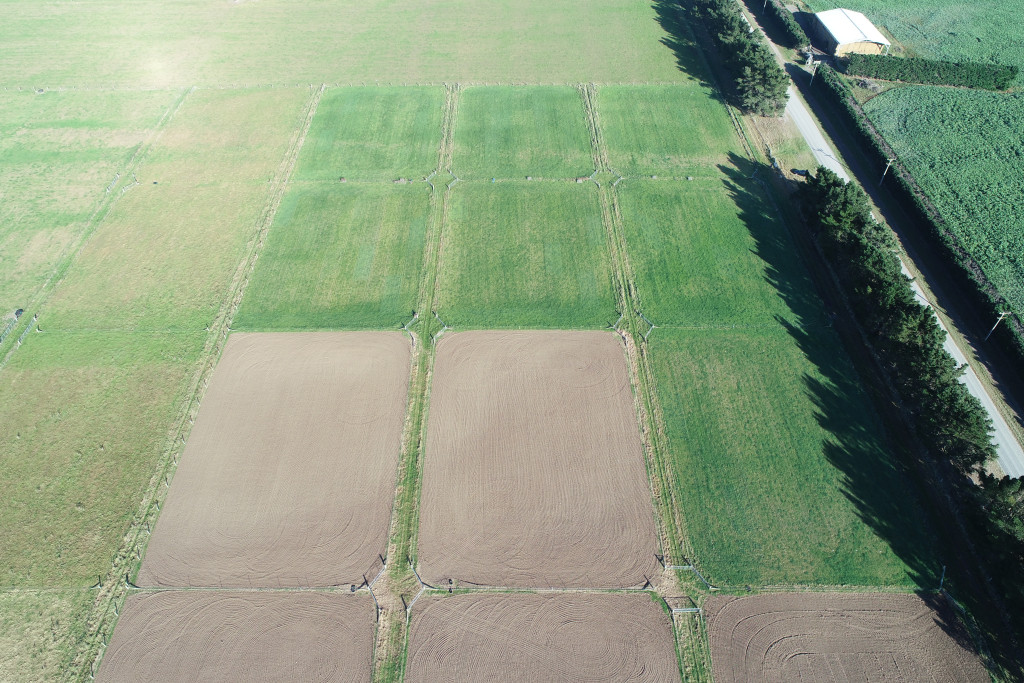A long-term pasture persistence trial (PPT), now in its eighth year, is unique in its duration and ability to evaluate the performance of a range of grass cultivars. The trial is a joint programme between Lincoln University and AgResearch, and received funding from the T.R. Ellett Agricultural Research Trust.
Lincoln University’s Dr Tom Maxwell has oversight as lead academic at the South Island site for the trial, the Ashley Dene site in Canterbury, home to the 10-year study looking at different grass species, predominantly perennial ryegrass. He is supported by Dr Gerald Cosgrove, Senior Scientist at AgResearch Grasslands in Palmerston North, who coordinates the pasture persistence program for the North and South Islands. At a basic level, the trial involves a series of sequential annual sowings over 10 years, aimed at discovering which grass cultivar will stand the test of time, and why.
This autumn, a 0.3ha paddock was sown with eight cultivars of perennial ryegrass, one of cocksfoot and one of tall fescue. This has been repeated annually since the trial began in 2015, all grown on the same farmlet. Measurements are taken twice a year, in spring and autumn to evaluate what is happening. Specific persistence traits are measured, including dry matter production (yield), botanical composition, tiller density and basal cover, with a focus on the sown grass performance and botanical composition of the sward.

“It’s designed to look at the long-term performance of a spectrum of grass cultivars on the market,” Dr Maxwell explains. “Each grass has a monoculture patch of 12m x 4m, all grown next to each other.” Originally, there was a sister trial at a site at Ruakura, in the North Island too, although this has unfortunately ended recently due to a change in land use, making the South Island site even more valuable. Both sites used the same design and cultivars, the difference being the South Island site is grazed by sheep, while dairy heifers grazed the Waikato site.
In his role, Dr Maxwell organises and takes all measurements from the site, collecting and analysing the data. The funding from the Trust has enabled him to pay for help and equipment to maintain the running and execution of the research, as well as preparing new paddocks and sowing the seed (the seed itself is gifted by industry).
“If we didn’t have the Trust funding, we would not be able to collect the measurements needed to assess persistence, and I would need to find funding elsewhere.” To date, they have published three papers from the PPT sites. “The conclusion so far is that there is both a cultivar effect on persistence and an establishment year effect on persistence. The year in which a pasture was established has just a strong effect on which cultivar is performing the best, and its subsequent persistence.”
The two standout cultivars are ‘Savvy’ cocksfoot, which has proven itself to be the most persistent grass of the three species, and the most persistent perennial ryegrass cultivar is ‘Request’. “The aspirational goal, the ultimate aim, is to provide strategy for pasture managers, to allow them to manage for persistence based on the evidence from this long-term trial.”
“Often, we are limited by time and funding, so to get 10 years of data to base our conclusions on, that is very powerful. The Trust is contributing to the acquisition and production of a long-term dataset, which is quite a unique thing. It will allow us to make much more nuanced and confident recommendations to manage for pasture persistence in the future.”
A journal article about this research can be found here.
